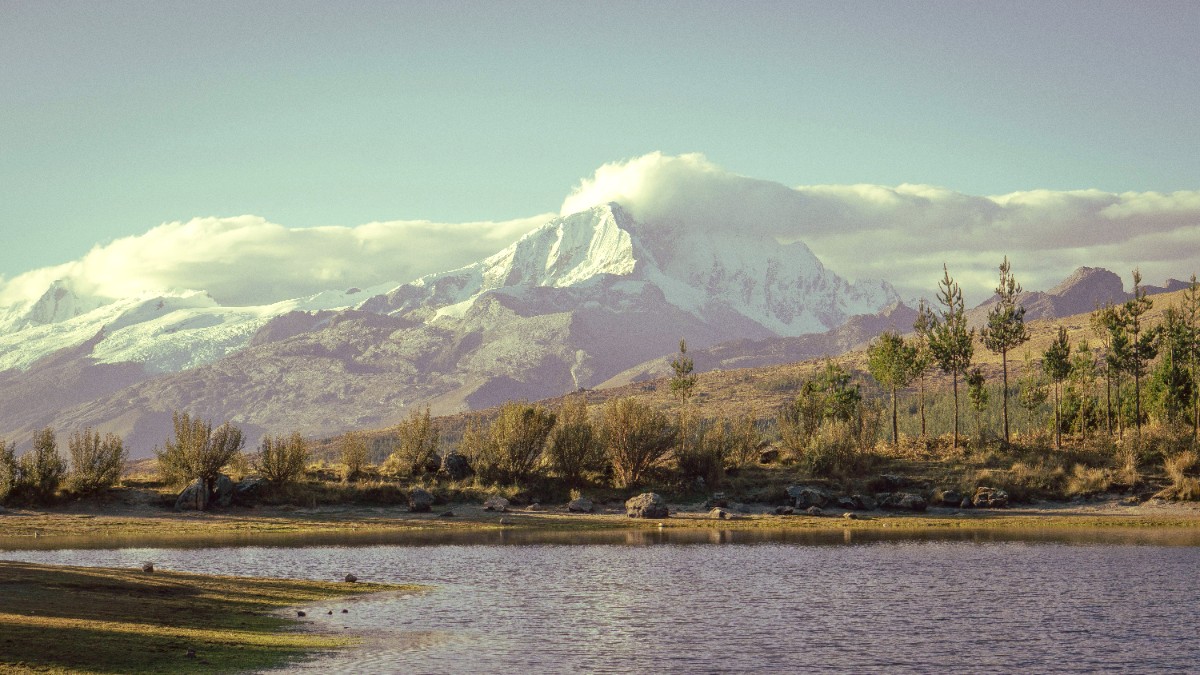
Huaraz And The Cordilleras, Peru
The air here feels different, crisper, carrying the scent of pine and adventure. Every direction displays a view of snow-capped giants that dominate the skyline, hinting at the trails and climbs that await. For active travel, from day hikes to challenging multi-day treks and high-altitude climbs, Huaraz presents unmatched opportunities. Yet, beyond the physical challenges, Huaraz also presents a chance to connect with the deep-rooted traditions of the Peruvian highlands.
Imagine waking up to the sight of Nevado Huascáran, Peru’s highest mountain, bathed in the morning sun. Picture hiking through valleys carved by glaciers, passing by herds of alpacas and small, traditional villages. This is the daily reality in Huaraz.
The city itself, bustling and energetic, acts as a hub where adventurers from around the globe converge, sharing stories and planning their next ascent. This guide details all the practical information for a safe and rewarding trip.
The Cordillera Blanca rises, an imposing wall of ice and rock, dominating the horizon around Huaraz. This mountain range, part of the Peruvian Andes, holds some of the most spectacular alpine scenery on Earth. For climbers, trekkers, and nature enthusiasts, Huaraz forms a welcoming base. Its charm comes from the raw beauty of its surroundings and the authentic culture of the Ancash region.
Huaraz encourages activity, pushing visitors to explore the trails, scale the peaks, or simply breathe in the crisp mountain air. The city draws those attracted to high altitudes and grand vistas. Each day presents a new opportunity for discovery, whether it involves a challenging trek to a glacier lake or a stroll through a local market.
The people of Huaraz, many with deep Andean roots, show a quiet resilience shaped by the mountains.
Their customs, food, and daily rhythms offer a glimpse into a way of life that has survived for centuries.
You find their warmth and hospitality. This adds another layer to the travel experience.
One moment you navigate busy streets, the next you are surrounded by silence. This duality creates a dynamic and memorable travel experience.
Prepare to be amazed by the sheer scale of the landscapes and the welcoming spirit of the community.
The call of the Andes is strong in Huaraz. It promises not just a trip, but a true adventure. This guide assists you in answering that call with confidence and preparation.
Huaraz encourages exploration, inviting visitors to trek, climb, or simply breathe the crisp mountain air. The city draws those attracted to high altitudes and grand vistas. Each day presents a new opportunity for discovery.
The people of Huaraz, with deep Andean roots, possess a quiet resilience. Their customs, food, and daily rhythms offer a glimpse into centuries-old life. Their warmth and hospitality further enrich the travel experience.
Image suggestion: A wide panoramic shot of Huaraz city with the Cordillera Blanca peaks in the background.
Huaraz, officially known as Huaraz City, serves as the capital of the Ancash Region in Peru. It sits at an approximate elevation of 3,050 meters (10,000 feet) above sea level. The city rests within the Callejón de Huaylas, a long, narrow valley shaped by the Santa River. This valley separates two significant Andean mountain ranges: the Cordillera Blanca to the east and the Cordillera Negra to the west.
The Santa River flows north through the Callejón de Huaylas, originating from Lake Conococha to the south and eventually draining into the Pacific Ocean. Its presence supports agriculture in the valley, with fields of corn, potatoes, and quinoa cultivated on the valley floor and terraced slopes. The valley also functions as the main transportation corridor, with the paved highway connecting Huaraz to other towns and cities.
"White Range" with snow-capped peaks, including Huascáran (6,768m), Peru's highest mountain.
"Black Range" runs parallel, lacking snow, with a darker, rockier appearance.
The Callejón de Huaylas, shaped by the Santa River, supports agriculture and serves as a transport corridor.
Huaraz's central location within the Callejón de Huaylas makes it a natural base for exploring the surrounding mountains and valleys.
Flourished 900-200 BCE. Chavín de Huántar (3 hours SE of Huaraz) presents one of Peru’s earliest pre-Columbian cultures with complex stone carvings and underground galleries.
Other cultures left their mark. The Wari site of Willcahuain, a temple-tomb near Huaraz, offers insight into later pre-Incan peoples.
These ancient sites are tangible links to a profound past, reflecting on the long human presence in these high Andean valleys.
Archaeological sites connect visitors to Huaraz's ancient roots.
The rebuilt city embodies the spirit of recovery and perseverance.
This history, marked by ancient achievements and modern tragedy, deepens the experience of visiting this remarkable Andean destination.